Search results for 'oil painting medium'
-
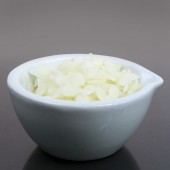
Bleached Beeswax
Starting at: £12.30
Beeswax is derived from melted honeycomb, and is available in two grades. Bleached Beeswax Pellets are white, having been bleached by the sun, and are an appropriate choice for using with pale colours, although they may revert to yellow over time. Natural Beeswax Pellets are yellow in colour, and offer a more flexible structure with a higher resin content. Beeswax has a melting point of 63-66°c, and may turn brown if over-heated. It is the most widely used wax in artists' materials, having a wide range of applications. Please see below for more details.
Learn More -
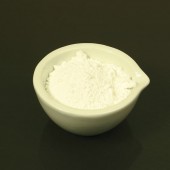
Alumina Hydrate Light
Starting at: £8.30
Alumina Hydrate is an inert pigment with highly absorbent properties, which can be ground into oil paint as an almost colourless extender. It is often used as an additive in commercial oil paints, particularly in conjunction with transparent or lake pigments, as it provides stability and a homogenous consistency without effecting colour or gloss, although it may effect the pigment strength. When combined with linseed oil, it produces an almost transparent painting medium for extending oil colours. Sometimes referred to as Lake Base. Learn More -
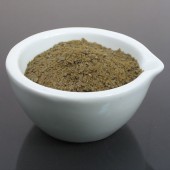
Carnauba Wax Grey
Starting at: £8.40
Carnauba Wax is the hardest wax commonly used in the production of artists' materials, with a melting point of 83-86°c. It is derived from a tree native to South America, and is available in a natural colour (grey), or a refined colour (pale yellow). Small amounts of carnauba wax are commonly used in both oil painting mediums and encaustic painting, usually in conjunction with beeswax to add toughness, durability and sheen to the paint film. It creates an inflexible surface, so works best on rigid supports such as gesso panels, and it should be noted that it will raise the melting point of encaustic mixtures. It can produce a glossy finish; as such it is used in waxes and polishes for shoes, cars, musical instruments, furniture, and wooden floors, especially when mixed with beeswax and turpentine. Learn More -
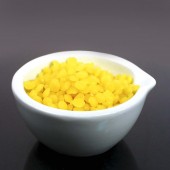
Natural Beeswax
Starting at: £11.20
Beeswax is derived from melted honeycomb, and is available in two grades. Bleached Beeswax Pellets are white, having been bleached by the sun, and are an appropriate choice for using with pale colours, although they may revert to yellow over time. Natural Beeswax Pellets are yellow in colour, and offer a more flexible structure with a higher resin content. Beeswax has a melting point of 63-66°c, and may turn brown if over-heated. It is the most widely used wax in artists' materials, having a wide range of applications. Please see below for more details.
Learn More -
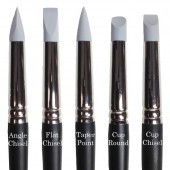
Colour Shapers
Starting at: £7.00
Unique silicone tipped tools for painting heavy mediums such as acrylic and oil paint. Excellent for spreading adhesives and appplying masking fluid. Can be used with Batik and encaustic wax. Available in soft ivory tip and firm grey tip. Learn More -
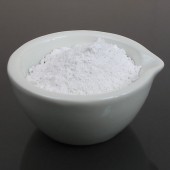
Precipitate Chalk
Starting at: £6.30
Precipitate Chalk is fine and white. For use in aqueous mediums as a ground for oil and tempera paintings. Learn More -
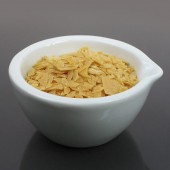
Carnauba Wax Yellow
Starting at: £6.50
Carnauba Wax is the hardest wax commonly used in the production of artists' materials, with a melting point of 83-86°c. It is derived from a tree native to South America, and is available in a natural colour (grey), or a refined colour (pale yellow). Small amounts of carnauba wax are commonly used in both oil painting mediums and encaustic painting, usually in conjunction with beeswax to add toughness, durability and sheen to the paint film. It creates an inflexible surface, so works best on rigid supports such as gesso panels, and it should be noted that it will raise the melting point of encaustic mixtures. It can produce a glossy finish; as such it is used in waxes and polishes for shoes, cars, musical instruments, furniture, and wooden floors, especially when mixed with beeswax and turpentine. Learn More -
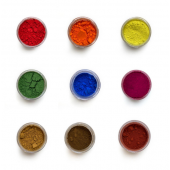
-
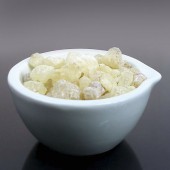
Gum Damar
Starting at: £10.00
Damar is a pale, almost colourless tree resin, which is soluble in turpentine, but not in alcohol or mineral spirits. It can be used as a varnish or as a glossy painting medium in conjunction with vegetable oils, and is generally preferable to other resin-based varnishes, such as mastic varnish, as it retains its colourless appearance for a longer period of time. In encaustic painting, the inclusion of damar resin imparts toughness and gloss to the paint surface. Learn More -
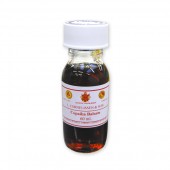
Cornelissen Copaiba Balsam
Starting at: £20.80
Copaiba Balsam comes from the South American tree Copaifera landsdorfii. Its primary function is to improve the appearance of paint layers that may have become dull, brittle or sunken upon drying. It is a viscous liquid that may be diluted with turpentine, but which should not be used in painting mediums.
Learn More -
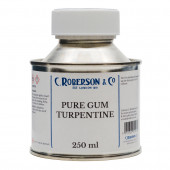
Roberson Pure Gum Turpentine
Starting at: £14.00
Slightly less refined than rectified spirit of turpentine. Often preferred as constituent of painting mediums. Learn More -
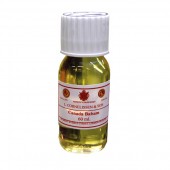
Cornelissen Canada Balsam
Starting at: £39.10
Canada Balsam is an oleoresin, meaning that it is a mixture of essential oils and resin. It comes from the fir tree Abies balsamea, native to Canada and the eastern states of North America. It is notable for its pale colour, clarity and gloss, making it a useful ingredient in recipes for oil-painting mediums.
Learn More -
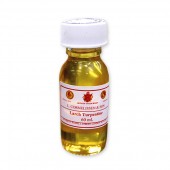
Cornelissen Larch Venice Turpentine
Starting at: £28.80
Venice Trupentine is a thick, resinous liquid extracted from the Larix decidua, a larch tree native to Austria. It can impart luminosity, brilliance and gloss when used in mediums and varnishes, and as such it was highly valued during the Golden Age of painting in Venice. It is a slow-drying balsam, which can be diluted with turpentine or placed in a bath of warm water to aid flow.
Learn More -
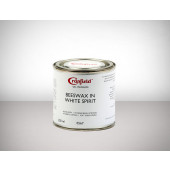
Cranfield (Spectrum) Beeswax in White Spirit
Starting at: £18.55
From the Cranfield website:
A pereparation of pure beeswax in white spirit, this is used to achieve a soft sheen on your finished painting. It will retard drying, allowing you to achieve a range of effects.
Learn More -
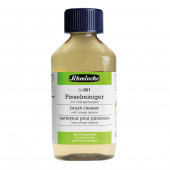
-
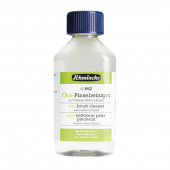
-
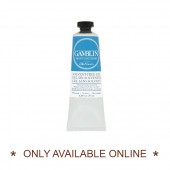
Gamblin Solvent-Free Gel
Starting at: £6.80
Gamblin Solvent-Free Gel is manufactured by the American company Gamblin. They write:
"Gamblin Solvent-Free Gel is the only solvent-free painting medium that supports a broad range of painting techniques with minimal compromise. Solvent-Free Gel gives colours more flow and transparency, yet holds the shape of your brushmark. Solvent-Free Gel has a moderately fast drying rate and increases gloss. Made from safflower oil and alkyd resin, Gamblin Solvent-Free Gel is non-toxic and contains no Gamsol or petroleum distillates. In comparison to other solvent-free mediums, Gamblin Solvent-Free Gel supports the broadest range of painting techniques with the least compromise across color, dry time, texture and mark-making. To ensure proper drying of paint layers, Solvent-Free Gel should be used in moderation with oil colors. No more than 25% by volume. To avoid wrinkling, apply mixtures of Solvent-Free Gel and oil colors thinly. To paint solvent-free, we recommend Gamblin Safflower Oil for cleaning brushes while you are working. After your painting session, brushes can be further cleaned using Gamsol and/or soap and water."
Learn More -
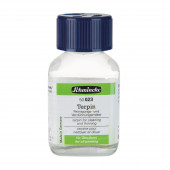
Schmincke Terpin
£9.45For thinning oil colours and cleaning painting equipment. Mixture of solvents for painting in oil. Nearly odourless. Learn More -
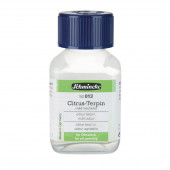
Schmincke Citrus-Terpin
£10.40Solvent mixture for diluting oil paints and cleaning painting equipment. Citrus smell of lemon peel. Learn More -
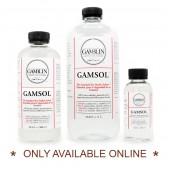
Gamblin Gamsol Mineral Sprit
Starting at: £9.30
Gamsol is an odourless mineral spirit created by the American company Gamblin. They describe it as "the safest solvent that allows oil painters to utilize all traditional painting techniques without compromise."
Please see below for Gamsol's primary applications.
Learn More -
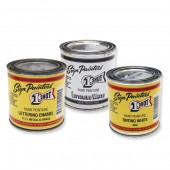
One Shot Lettering Enamel Paint
Starting at: £20.55
Designed for traditional sign painting, these oil based lettering enamels provide superior vibrancy, flexibility, durability, and single stroke coverage. Specified for fine, sign paint lettering on store fronts and vehicles, the vibrant colours of 1 Shot Lettering Enamels spread evenly and offer outstanding hiding, durability and fade resistance. Superior flow characteristics assure the virtual absence of brush marks and provide a clean, sharp edge. Ideal for use on interior or exterior metal, glass, wood, and enamel receptive banners and vinyl. Learn More -
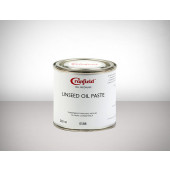
Cranfield (Spectrum) Linseed Oil Paste
Starting at: £24.65
Call to Order
From the Cranfield website:
An almost transparent painting medium based on refined linseed oil and alumina. It is similar in consistency to Studio Oil Colours in tubes. It does not promote quick drying and may be used to extend oil colours. It can be used in large ratios where the desired effect is to increase yellowing and darkening of pale colours. It will not increase gloss.
Learn More -
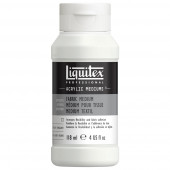
Liquitex Acrylic Fabric Medium
Starting at: £12.35
Enhances blending, workability, and adhesion of acrylic colours for painting acrylics directly on to fabric. Reduces paint stiffness. No heat setting required. Learn More -
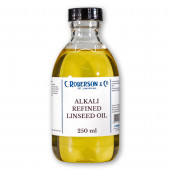
Roberson Refined Linseed Oil
Starting at: £13.30
Linseed Oil is derived from flax seeds, and appears on our shelves in many guises: Cold Pressed, Refined, Stand Oil, and as a key ingredient in many mediums. It has been appreciated for its drying properties since the Medieval period, and has become the most popular oil used in painting today due to the strong, flexible and glossy film that it creates.
Alkali Refined Linseed Oil has been treated to reduce its acidity, and is a useful ingredient in mediums and varnishes.
Learn More -
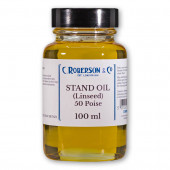
Roberson Linseed Stand Oil
Starting at: £10.50
Linseed Oil is derived from flax seeds, and appears on our shelves in many guises: Cold Pressed, Refined, Stand Oil, and as a key ingredient in many mediums. It has been appreciated for its drying properties since the Medieval period, and has become the most popular oil used in painting today due to the strong, flexible and glossy film that it creates.
Stand Oil is paler and more viscous than other Linseed Oils, having been heated and kept at temperature to provoke a molecular change. It is not suitable for grinding colours, but it is a very versatile ingredient that can be thinned with turpentine to create a glazing medium or be included in a varnish. Stand Oil is notable for its ability to smooth out brush strokes to create an enamel-like surface.
Learn More -
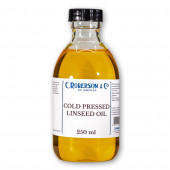
Roberson Cold Pressed Linseed Oil
Starting at: £7.50
Linseed Oil is derived from flax seeds, and appears on our shelves in many guises: Cold Pressed, Refined, Stand Oil, and as a key ingredient in many mediums. It has been appreciated for its drying properties since the Medieval period, and has become the most popular oil used in painting today due to the strong, flexible and glossy film that it creates. Cold Pressed Linseed Oil is ideal for the grinding of pigment to make oil paints. The process of producing Cold Pressed Linseed Oil results in a lower yield, but the resultant oil is of a superior quality to oil that has been extracted by other methods, creating a paint film that is more resistant to embrittlement on aging. Its yellow colour is caused by the high concentration of linolenic acid, the presence of which provides durability to the paint film. The amount of oil that each pigment requires can vary enormously. Alizarin Crimson, for example, requires a high percentage of oil compared to most other colours. We would always recommend mulling the pigment and oil together thoroughly to create a "short" or buttery paste, with evenly dispersed, well-coated pigment particles. This process contributes to the strength and flexibility of the paint film, and prevents the inclusion of excess oil. Origin: USA Learn More -
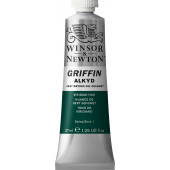
Winsor & Newton Griffin Alkyd Oil Colour
Starting at: £7.15
Artist quality range of 50 colours made from pigments bound in an oil modified alkyd resin. The main advantage of the Griffin Alkyd range is speed of drying - about 24 hours. Ideal for under painting. Compatible with traditional oils. Learn More -
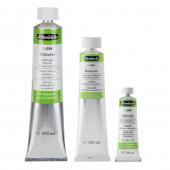
Schmincke Malbutter Impasto Medium
Starting at: £8.20
A gel medium that increases the buttery character of oil colours and decreases their drying time. Useful for impasto techniques and knife application. Add to oils in a maximum ratio of 1:4. Contains alkyd resin.
Learn More -
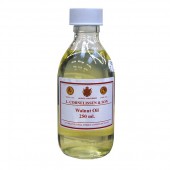
Cornelissen Walnut Oil
Starting at: £8.20
The introduction of Walnut Oil as a pigment binder is contemporaneous with the emergence of Linseed Oil. Their drying properties have been appreciated since the Middle Ages, and throughout history there is evidence of both oils being used alongside each other within the same painting. In fact, until the sixteenth century, it is believed that Walnut Oil was the preferred binding medium among Italian artists. It is made from mature walnut kernals, offering a pale colour and brilliant gloss. For this reason, it is sometimes chosen as a binder for light colours, as it provides a stronger paint film than Poppy Oil, and faster drying times. However, a paint film made from Walnut Oil will tend to be brittle, so it is more suited to a rigid support rather than canvas.
Learn More -
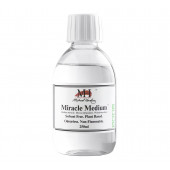
Michael Harding Miracle Medium
Starting at: £12.00
MM0 Miracle Medium is a solvent-free, odourless, vegan, and plant-based Medium that serves as an alternative to traditional turpentine. This medium offers artists a natural and sustainable option for thinning oil paints, cleaning brushes, and glazing (see our MM2 Quick Dry Dammar Varnish Miracle Medium) without the use of harsh chemicals or toxic fumes. CAN EXTEND DRYING TIME. ADD 5-10% TO OIL COLOUR AS NEEDED. Oil paint artists use MM0 Miracle Medium in several ways: Artists may dip their brush in MM0 Miracle Medium before applying it to the paint to achieve the desired consistency. Clean brushes: MM0 Miracle Medium can be used to clean oil paint brushes. After painting, artists may rinse their brushes in MM0 Miracle Medium to remove excess paint and then wash the brushes with soap and water – Use as a painting medium to mix with oil paints, enhancing flow and transparency – Clean brushes by dipping them in the medium and wiping them clean. – Dilute or thin oil paints without the use of traditional solvents. – CAN EXTEND DRYING TIME. ADD 5-10% TO OIL COLOUR AS NEEDED. – Available in 100ml, 250ml and 1 Litre. Learn More




